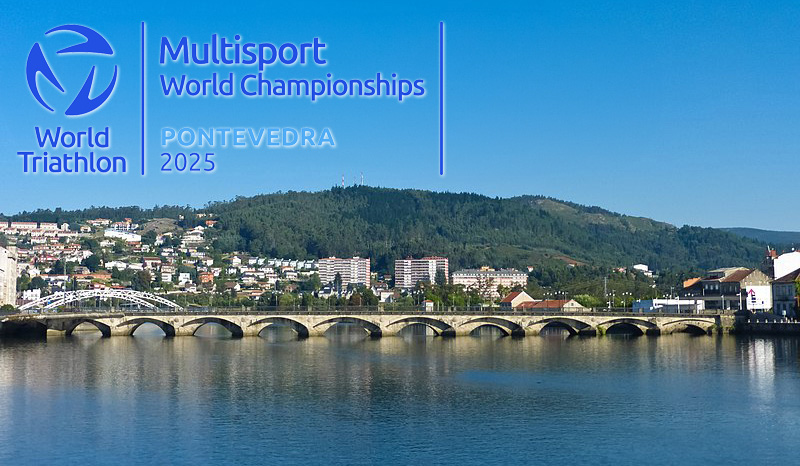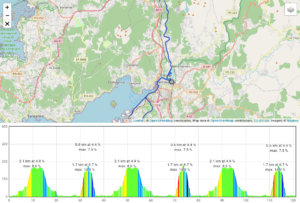The 2025 Long Distance Triathlon and Aquabike World Championships will take place as the final race of the World Triathlon Multisport World Championships on June 29th. This marks the second time, after 2019, that the event will be hosted in the Galician town in the northwest of Spain, which also held the Standard Distance World Championships in 2023.
The race venue will remain the same as in previous events, and the swim course in the Río Lérez is also unchanged. However, this could be the first time the swim spans the full 1.9 km distance, as it was shortened due to low water temperatures in 2019. Back then, the event was held in early May, but with the championships now scheduled for late June, water temperatures are less likely to pose an issue.

However, if you expect a race in hot and sunny weather in the Spanish early summer you might get disappointed. This is what the weather was like on the 29th of June over the last five years:

What has changed significantly compared to previous races in Pontevedra, is the bike course. If you check the official course information page, the reported elevation gain of 628 meters per loop over three 40 km laps might seem daunting. But don’t worry – this number appears to be exaggerated. Elevation gain can vary depending on the mapping tool used, and determining the “true” figure is always tricky. Our mapping tool calculates an elevation gain of 415 meters per lap (see bike course details on Aquabike.World). Cross-referencing with other tools, this figure seems more realistic. So, it’s likely closer to 1,245 meters for the entire bike course, rather than the organizer’s reported 1,884 meters.
 The first part of the bike loop will be familiar to athletes who have competed in previous events in Pontevedra.
The first part of the bike loop will be familiar to athletes who have competed in previous events in Pontevedra. However, the second half is entirely new. After completing the “northern loop,” which was part of past courses and includes a major 2 km climb, athletes will head south from Pontevedra. This segment features a flat section on the way out and halfway back before the course veers right into another 2 km climb. This climb includes a mix of gradients: a flat section midway, followed by a steeper segment. While a report in the Diario de Pontevedra mentions gradients exceeding 20%, our mapping tool – typically rather on the conservative side when estimating steepness – indicates a maximum gradient of 13%. The actual gradient likely falls somewhere in between, but it’s still worth considering when deciding on your gear or bike setup.
Update I: There has been a significant change of the bike course (see new bike course). The hill in the second half is not part of the course anymore. Therefore another – much easier – hill was added at the northern end of the course. While it’s certainly still not an easy course, it seems a bit more manageable for the not so strong cyclists. And it looks a bit more like a course for a TT bike now. However, the elevation gain given on the event website still seems a bit off. While the organizer states an elevation gain of 518 metres per lap, resulting in an overall elevation gain of 1.554 metres, our tool calculates an elevation gain of 1.068 metres – which seems way more realistic.
Both climbs, like most of the course, are on wide and straight roads. Aside from a loop through the Pontevedra University campus and a few roundabouts in the city, the course lacks technical sections. The descents, in particular, are straightforward and fast.
Details about the Aquabike finish have not been published yet. A preliminary image suggests that the finish line will be at the dismount line, as it was for the Standard Distance World Championships last year. If this setup is confirmed, it would raise the same safety concerns I highlighted in my previous race preview. That said, there haven’t been too many reports of serious incidents. Given the triple distance of this race and the more spread-out field of athletes on the challenging course, issues are even less likely. Nevertheless, I maintain that having the finish line at the dismount point in a race with a large field of competitors is not ideal. While the risk of dangerous situations is much lower in a long-distance race, this setup could still lead to critical situations – though nothing like the chaos seen at this year’s Standard Distance World Championships finish in Torremolinos.
Update II: While the image on the event website still shows the aquabike finish at the dismount line, the new World Triathlon competition rules state that it must be 100 to 200 metres before. On the Pontevedra course this would mean, that the finish is just before the final roundabout.
